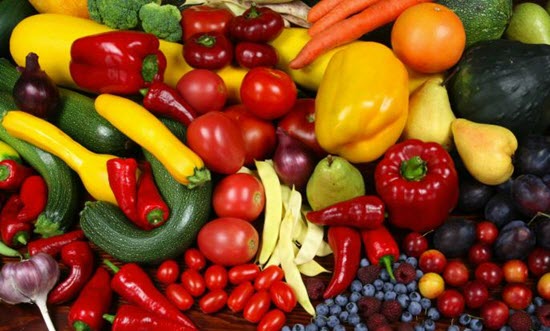
Plenty of things about nutrition are important but, to me, kinda boring. This is one of those things. But the topic is health-related, so it seems like a viable one.
What”™s great is many foods are said to be powerful disease fighters, and this post will cover several of them. Those who plan to object that I”™ve left out a bunch will be right. This is not meant to be the definitive, exhaustive list of such foods.
As you probably already know, colorful pigments in foods often indicate the presence of phytonutrients that can fight cancer, heart disease, and other diseases associated with oxidative damage. Oxidative damage is caused by free radicals, molecules that have lost an electron. Free radicals can scavenge electrons from healthy molecules, which may then develop diseases, including cancer.
Free radicals occur during normal metabolic functions but can also be created by toxins, processed foods or pollution. Potential sources of free radical production are everywhere. Antioxidants in foods help guard us against the damage they cause.
Red/blue foods contain anthocyanins. Examples are cherries, blueberries, plums and strawberries. In addition to anti-inflammatory benefits, they can protect against memory loss and declining motor skills.
Yellow/orange foods contain carotenoids, which can fight lung cancer. Examples of these foods are sweet potatoes (a wonder food in themselves), pumpkin, carrots, winter squash, cantaloupe, and broccoli. The chlorophyll in broccoli masks the yellow/orange pigment.
Orange foods, such as mangoes, oranges and papayas, contain cryptoxanthin, which is said to reduce cervical cancer risk.
Lycopene is well known for its ability to fight prostate cancer and heart disease. Since cooked tomatoes contain lycopene, they sparked, as you may recall, an odd controversy on whether or not pizza is a health food. No comment needed.
The yellow pigments — lutein and xeaxanthin — can protect the eye from blue-spectrum light and guard against macular degeneration. Corn and spinach are foods that contain them. Again, the chlorophyll in spinach masks the yellow pigment.
Astaxanthin is an important antioxidant found in pink foods — wild salmon, shrimp, lobster and crab.
An often-overlooked produce color is white. White produce is said to protect against stroke. White produce includes cauliflower, parsnips, Daikon radish, cucumbers, apples, pears, and bananas. Apples and pears are also anti-inflammatory and may help reduce blood pressure.
Looking beyond colors, some high-ranking antioxidant foods are dried beans, blueberries, cranberries (not dried — those are sweetened), berries, artichokes, prunes, apples, pecans, cherries, black plums, and Russet potatoes.
Cancer-fighting foods include almonds (10 per day), apples, blueberries, cherries, Brazil nuts, chickpeas, lentils, red beans, oranges, green leafy vegetables, dark green vegetables, tomatoes, wheat grass juice, and cruciferous vegetables.
Those much-touted and healthful cruciferous vegetables include broccoli, cauliflower, Brussels sprouts, cabbage, spinach, arugula, bok choy, collard greens, Daikon radish and other varieties, horseradish, kale, kohlrabi, mustard greens, rutabaga, turnips, and watercress.
As you can see, several foods show up on more than one of the above lists. Those are nutrition powerhouses.
Despite the appearance of various fruits on all of the lists, my general recommendations are 6 to 13 servings of vegetables per day (a serving is ½ cup), plus 1 to 2 servings of fruit per day (a serving is ½ cup or 1 medium-size fruit). Choose your fruits and vegetables from the lists above, and above all, stay away from the 5-a-day approach. That can too easily turn into 5 servings of fruit with no vegetables.
Don”™t forget to include nuts and beans. And, of course, avoid junky, processed foods to limit free radical formation in the first place.
- New Year’s Resolutions: A Sugar Addict’s Survival Guide - April 15, 2024
- Motivation vs. Enthusiasm - October 12, 2023
- Why Exercise Shouldn’t Be Just One Thing - November 9, 2022
